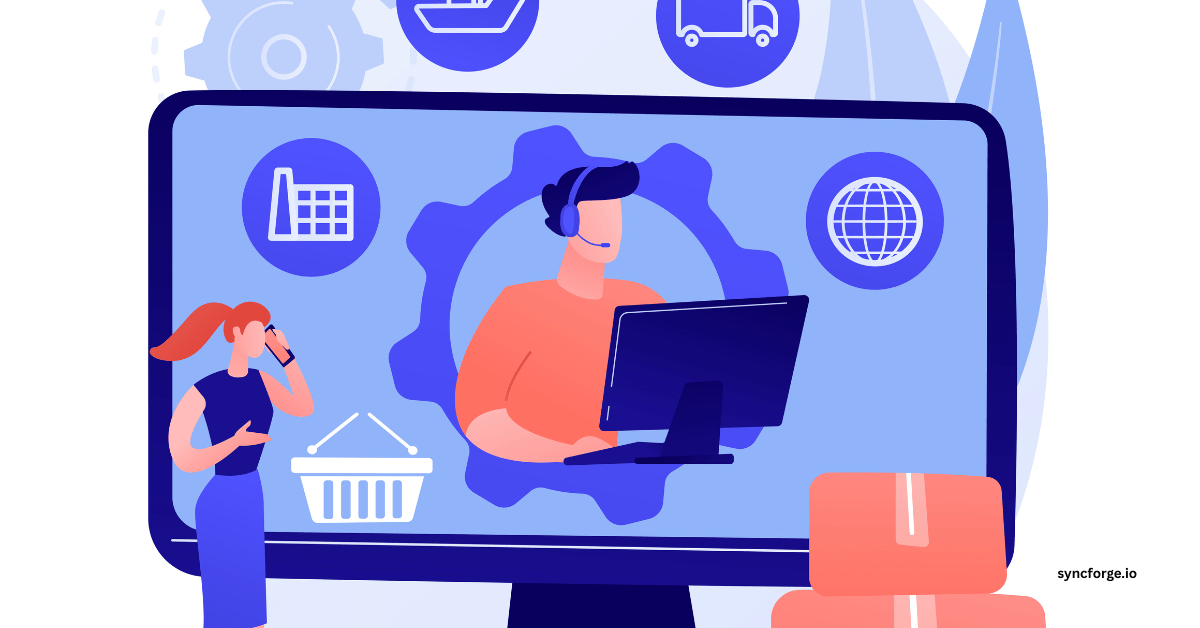Account Management SaaS Is Revolutionizing Customer Retention and Growth in 2025

Guide to Account Management SaaS
Have you ever pondered what actually characterizes the long-term success of SaaS businesses besides product quality and innovation? The truth is, it is most often found in the way customer relationships are managed.
In a market subscription renewals are the main source of sustainability, account management is the tool that connects customer satisfaction with business growth. Relationship management is not only about retaining clients; it is also about recognizing upselling opportunities and ensuring that customers are consistently getting value from your product.
As a result, Account Management SaaS is a focused approach that empowers teams to map out customer interactions, effortlessly transition to the next step, update client health, and deliver customer service that not only meets but exceeds expectations.
Regardless of whether it is a startup that is scaling its client base or a big company that is managing complex portfolios, Account Management SaaS provides a means of being in touch, data-driven, and customer-centric.
We will explore each and every facet of Account Management SaaS in this comprehensive guide: a short introduction to the idea, how it functions, the main account management SaaS responsibilities, best practices to get the most out of it, as well as the challenges that you should be careful of.
What is Account Management SaaS?
Account Management SaaS means an intentional and strategic approach to customer support throughout the journey that includes presale engagement, renewal, and growth.It is about knowing the businesses you work with inside out, helping the customers to optimize their processes, and ensuring that clients continue to get value from the software.
The focus, however, is predominantly on the creation of business outcomes such as renewals, upsells, and cross-sells, while also building trust and loyalty for the future. Account management, in contrast to customer success, which is concerned with service and product adoption at a daily level, is at the level of the contract; it is about management of overall goals, key performance indicators, and revenue growth opportunities.
Account Management SaaS are the bridge that connects the company to its customers. They facilitate the purchase of upgrades, guide users through onboarding or trials, and offer tailor-made solutions for the most valuable customers. Besides that, they are charged with the oversight of usage data, resolving issues, and spotting new ways of value maximization.
Because most SaaS revenue comes from subscription models, account management is customer retention and growth that is sustainable; thus, account management is extremely important. This is particularly true for enterprise-level clients, i.e., those who usually account for the largest share of revenue, where stringent account management leads to client satisfaction, reduction of churn, and long-term profitability.
The Importance of Account Management SaaS
No SaaS business can effectively expand its operations without having an efficient account management plan. When your company keeps growing, it won’t be long before you realize that account management and customer success, which are two departments closely connected but still have different functions, are different.
Account Management SaaS is a focus on commercial results, renewals, and customer growth, while customer success is about product adoption and satisfaction. The two of them working together, however, is a very effective system of retention, revenue, and scalability.
The adoption of a detailed plan for Account Management SaaS allows the different units to be equipped with tools that facilitate the management of hundreds of accounts across various products and the different subscription tiers.
In addition to that, the plan aims to reduce churn through the engagement of account managers, customer success managers (CSMs), and support teams, with all of them sharing the retention goals as a result of the alignment.
Also, it offers technical assistance for addressing the issues arising from complicated SaaS implementations, ensures that there is a continuous alignment with the customer outcomes, and operations are not only lean but also efficient across all the different industries.
Reduce Churn Through Better Customer Relationships
ThroughAccount Management SaaS, you can have a direct impact on the minimization of your customer churn, which is ultimately reflected in the increase of your business revenue. In the SaaS sector, where a customer can easily switch from one competitor to another, being proactive in account management can be a deciding factor.
Think of two customers: one is not provided with an account manager, and the other is. The first customer experiences a difficult onboarding process and, since there is no proper support, ends up moving to a competitor. On the contrary, the second customer, who is the account manager’s client, gets the help needed in onboarding, learns how to make the software more efficient, and is retained for another year. The above illustration of a simple case shows that by regular interaction and a customized approach, you not only keep customers but also enhance their loyalty.
Maximizing Customer Lifetime Value (CLV)
Account Management SaaS work most closely with customers in the retention drive and, therefore, their activities lead to the increase of customer lifetime value (CLV). They scout for potential upsell and cross-sell scenarios, make the process of renewal smooth and easy, and figure out new ways through which the customers can derive value from the product.
For example, a customer who is mulling over a change of software might be in the dark that their current instrument has a certain add-on that fully meets their needs. Your account manager, who tells the customer about this feature, not only helps the customer to renew their subscription but also to upgrade, thus providing the company with additional recurring revenue.
Driving Referrals and Sustainable Growth
Robust account management does not merely retain customers; it converts them into advocates. Happy customers, in most cases, talk about their experiences and thus bring in new customers by way of referrals.
The State of Referral Marketing Report 2020 by SaaSquatch says that referred customers are 18% more loyal, have a 16% higher lifetime value, and spend 13.2% more than non-referred customers. This proves that through account management, the company not only deepens the existing relationships but also, by bringing in new high-quality customers, gets on the path of sustainable growth.
Simply Account Management SaaS is not just about the management of contracts. It is a thing of trust-making, ensuring the continuous engagement, and eventually, transforming the customers who are happy with your service into the business partners who will last.
How Account Management SaaS Works?
Essentially, Account Management SaaS revolves around providing continuous and substantial value to customers. Account managers who perform well are not only the ones managing accounts, but they also earn the customer’s trust, become their strategic partners, and are the main people clients turn to for advice, problem-solving, and feedback.
Actually, a Gallup study discovered that companies giving real customer impact have 72% more fully engaged customers, which clearly indicates the effectiveness of this approach.
One proficient account manager should not only be considered as a mere contact person, but they are a supporter throughout the entire customer journey. In any case, be it business reviews or project discussions, they bring insight, control the expectations, and let everything be heard. It is through their detailed notes, commitment to the important issues, and always being ahead that they establish the trust which clients truly appreciate.
Theoretically, these connections result in stronger loyalty and higher retention. Customers become more willing to accept upsells, less resistant to price adjustments, and more likely to renew their contracts. Thus, that is the real power of successful account management, it increases the level of trust while it is directly helping your company to grow.
Key Responsibilities for SaaS Account Management
Account managers in SaaS companies are the primary faces of the customers, but they also function as the company’s strategists, communicators, problem-solvers, and growth agents. The scope of their work is much wider than just relationship maintenance. These core account management roles highlight how customer success and business growth are handled by SaaS account management.
1. Setting Clear Goals and Expectations
Account managers establish detailed targets for every client’s account, thus allowing all stakeholders to see what the results mean. Setting up successful goals and expectations is basically the first step in any kind of partnership.
- Set up measurable objectives and milestone points for each client.
- Change goals conditionally upon the user’s requirements and cases.
- Ensure that everyone involved in the project understands the latest progress and priorities.
Account managers, by setting up clear expectations, have the opportunity to be constantly on the front foot with their work.
2. Personalizing Customer Workflows
To say that two customers are exactly alike is not true and the SaaS product/service journeys of these customers should also be different, by no means. Account managers decide and implement the customization of the workflows that will satisfy each customer’s requirements.
- Help customers get through individualized stages of product use.
- Implement customer data as a reference to solve capacity limitations or by providing them with deeper engagement.
- Work with the product and customer success teams to make the product more user-friendly and comfortable for the clients.
This tailored method guarantees that clients will have a certain feeling that is identified, helped, and valued at every point of their journey.
3. Acting as the Customer’s Main Point of Contact
Account managers should be considered a link that connects a client to a company. They are the ones who take care of all the key talks, updates, and escalations.
- Reply to and handle customer inquiries and concerns in a timely and efficient manner.
- Lead the customer through onboarding, implementation, or new features by providing updates.
- In a proactive manner, however, offer upsells or cross-sells only when they can bring real value.
Communication skills should be on a high level here because trust is established through being responsive and reliable.
4. Planning and Managing Customer Workflows
Top account managers do not just see what is in front of them. They map the customer journeys and oversee the projects from the very first step to the last one, making sure that every campaign is in line with business goals.
- Create strategic account plans that describe customer goals and use cases.
- Work with the cross-functional teams to ensure project delivery is going smoothly.
- Keep track of KPIs such as renewal rates, churn, and customer satisfaction.
Through the thoroughness of their work, account managers are project coordinators who keep everything running smoothly in the background of each account.
5. Driving Growth and Expansion
Growing existing accounts while securing retention is probably the biggest part of the job of SaaS account managers.
- Detect upsell and cross-sell opportunities.
- Partner with the sales team to close renewals or new deals.
- Consciously turn smaller accounts into larger, more profitable ones through nurturing.
Essentially, this is where the account management role is closely connected with sales; however, always from the point of view of value creation rather than applying pressure. Moreover, other roles of account management also include maintaining a high-level view of accounts, reducing friction and building loyalty and managing sales quotas and reporting.
Best Practices for SaaS Account Management
It’s time to move on from the why and what of SaaS account management and look at the how. Managing SaaS accounts efficiently should not just expose you to the clients; It should enable you to create value, gain the clients’ trust, and increase your company’s growth.
These five best practices are what every SaaS account manager needs to adopt if they are serious about developing strong customer relationships and achieving high retention rates.
1. Know Your Customers Thoroughly
It is impossible to manage something you do not understand- this applies to your customers even more. Account managers of the SaaS industry who stand out in performing their tasks know their clients almost as well as they know their own products.
Creating detailed buyer personas should be your first step in achieving this. These personas are representative figures of the customer types you serve and help you understand:
- Their goals, needs, and obstacles
- Budget and purchasing habits
- Demographics and decision-making processes
- Communication preferences and engagement behaviour
Information for these can be collected through surveys, interviews, or social listening tools. The deeper you go, the easier it is to tailor your messaging and to be able to anticipate needs and offer solutions that genuinely fit.
2. Create an Onboarding Experience That Shines
If the online software services industry is concerned, then the importance of first impression cannot be doubted- it is a deciding factor whether to have a long-lasting user or simply a one-off user. It may take a couple of minutes at most for your onboarding procedure to literally make or break your business.
Such techniques will eventually enable a strong onboarding flow:
- Be generous in greeting new users. It is a distinctive email you send them to introduce your team and resources and at the same time makes them feel greeted.
- Provide guided walkthroughs. Tooltips, interactive demos, or short video tutorials are some of the ways you can familiarize users with your platform.
- Make support readily available. Provide links to a knowledge base, webinars, or community forums. Follow up in advance.
- Help requests from customers should not be waited for; instead, contact them, ensuring that they are on the right track.
Wyzowl indicates that 86% of customers would be more willing to stay with a company that provides onboarding content. So why treat the onboarding as just a routine when you can use it as your first opportunity to impress?
3. Be Real, Supportive, and Necessary
Think of your clients as people who don’t only want a vendor but also a partner. A partner who listens, understands and is sincere in wanting the client to succeed.
In your role as account manager, you are expected to:
- Work through each meeting with integrity and put yourself in the other person`s place.
- Initiate actions to give help and useful materials without being asked.
- Use the questions to discover the needs which sometimes may not be visible.
- Have the viewpoint of a consultant, not a salesperson, when promoting a product.
Customers will regularly contact you not only to buy products but also to get your view and advice when you become their trusted advisor and not just another salesperson. That is the way to be loyal for a long time.
4. Measure the Right Indicators to Stay Ahead
While intuition is useful, data is the one that reveals the real story. Account managers in the SaaS industry who want to be successful use data-driven insights for making better decisions and identifying issues that can’t be solved at a glance.
Try to keep track of such indicators as:
- Customer Effort Score (CES): The degree of simplicity for customers to get help or accomplish tasks.
- Customer Satisfaction (CSAT): The happiness level of customers with the given service.
- Net Promoter Score (NPS): The likelihood of customers recommending the use of your product.
- Churn Rate & Lifetime Value (LTV): The indicators that measure retention and long-term profitability.
Using this information can reveal to you the possibilities that you haven’t thought of — for instance, customers who are struggling with using a certain feature or the moments when they would be most open to an upsell.
5. Employ the Right Tools to Increase Your Efficiency
Are you managing multiple accounts by hand? That will certainly lead to chaos. To keep up with your work efficiently and consistently, you should use the proper SaaS tools that will allow you to automate the tasks that you have to repeat and also gather customer data in one place.
Here are some examples of the necessary tools:
- CRM Software: For instance, Pipedrive or HubSpot are tools that facilitate the recording of customer interactions, contracts, and renewals, everything in one place.
- Video Conferencing Apps: With the help of Zoom, Google Meet, or GoToMeeting, you can easily communicate with clients remotely.
- Contract & E-Signature Tools: In what concerns contract approvals and renewals, the process can be easily made by the use of DocuSign or SmartDocs.
- Social Listening Tools: For example, LinkedIn Sales Navigator is a platform that keeps you updated with clients and their industry trends.
If you have set up the right systems, then you can afford to take less time in handling the logistics and more time in relationship building.
Challenges in SaaS Account Management

SaaS account management has its share of challenges. One of the largest challenges is balancing a healthy ratio of accounts to account manager; the excessive number of accounts per manager can lessen the attention and thus affect the performance.
Another problem frequently faced is being in a reactive mode, whereby account managers are always handling the consequences of actions instead of foreseeing risks and opportunities. Lack of alignment among different departments may also contribute to slowing down the progress, as the absence of collaboration between sales, customer success, and support usually results in miscommunication and inefficiency.
Besides that, inaccurate or partial data may be a cause of making the wrong decisions, thus it becomes more difficult to detect the trends or prevent churn. Breaking down these barriers takes the right balance in account structure, a proactive engagement strategy, good collaboration between the teams, and focusing on data accuracy and hygiene to keep your insights trustworthy and easy to act upon.
Conclusion
SaaS account management is the main instrument for customer retention, expansion, and securing long-term consistency. The technique, however, is not confined merely to managing customers; it extends to relationship management, understanding the evolving requirements of the customers, and delivering genuine value throughout their journey.
A great account manager not only fixes issues; they anticipate them, involve various teams to solve them, and make each communication a step towards strengthening the relationship and increasing the business.
If you are handling just one key account or a whole portfolio, it is still worth recalling that consistency, communication, and strategy are the factors that separate a customer from a lifelong partner. Begin refining your account management tactics right away and see how your client relationships — and the revenue — will soar to new levels.
Would you like to elevate your SaaS account management to a higher level? The first step is to review your current customer workflows and pinpoint the places where engaging proactively could turn good relationships into great ones.
FAQs:
1. What is the primary objective of SaaS account management?
To develop a solid, long-term connection with clients while increasing retention, customer base growth, and revenue expansion arises.
2. In what way is SaaS account management different from customer success?
Account management concentrates more on growth and renewals, whereas customer success is responsible for clients achieving their desired outcomes.
3. What abilities make a great SaaS account manager?
Great communication, strategic thinking, being well-organized, empathy, and having both a thorough knowledge of the product and an understanding of the client’s goals.
4. In what ways can account managers eliminate churn in SaaS?
They can do this by ensuring that they are always engaging with the client in a proactive manner, keeping an eye on product usage, and most importantly, tackling the issue of customer dissatisfaction before it escalates.
5. What are the means to help in SaaS account management?
Tools such as CRM systems, customer success dashboards, data analytics platforms, and project management instruments are very important in giving visibility and facilitating collaboration.




